by Naomi L. | January 28, 2015 | Blog, Creative Writing, Off The Bookshelf |
For Christmas 2013, I received a copy of Neil Gaiman’s newest acclaimed novel released in the same year. Unfortunately, though I wanted to add it to my Off The Bookshelf segment as soon as possible, other priorities in my life have been delaying my leisurely reading time, so that I only just managed to finish the book last month. It’s a shame I couldn’t get through it quicker, because the truth is that it was a delight to read. So without further ado, here’s my review of The Ocean at the End of the Lane by Neil Gaiman.
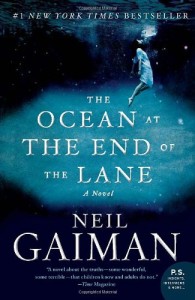
The Ocean at the End of the Lane, by Neil Gaiman
Summary
Published in June 2013, The Ocean at the End of the Lane tells the story of an unnamed man and a strange experience he faced in his youth. After returning to his childhood home for a funeral, the middle-aged narrator pays a visit to the farmhouse down the lane, where he met an extraordinary girl named Lettie Hempstock and her mother and grandmother when he was seven. While sitting at the edge of the pond behind the house – a pond Lettie had called an ocean – he suddenly recalls the details of the most fantastic and terrifying event of his past – “a past too strange, too frightening, too dangerous to have happened to anyone, let alone a small boy”.
Review
First off, I have to thank Vanessa Levin-Pompetzki for the book recommendation on her blog, since that’s where I first heard about this novel. I’m glad I stumbled upon her post, because the book really is a wonderful read. A fantasy tale narrated from the memories of a seven-year-old boy, the story touches on such themes as existentialism, the struggles between good and evil, and the discrepancies between childhood and adulthood.
What drew me in most about this book is the way it so subtly yet realistically depicts the simple qualities that make us human, such as curiosity and fear. The author does an excellent job of portraying the theme of self-identity throughout the story without emphasizing it too greatly; it was more of an impression left on me after finishing the book than a prominent point to focus on with every turn of the page. In that respect, I believe the author made a wise decision in creating a seven-year-old protagonist, as few adults in this world experience life as purely and innocently as children do.
This is another favorite theme of mine from the book: the divide between the world of children and the world of adults. From the beginning of the story, it’s implied that the middle-aged narrator sitting by the Hempstocks’ “ocean” feels somewhat disconnected from his youth, which he vaguely remembers as not being a particularly happy time in his life. Throughout his childhood memories, references are made to how differently grown-ups behave compared to children, as well as how difficult it would have been for him to make his parents understand what was happening at the time the strange events took place. Yet the author makes a point of illustrating how these differences are merely superficial; one of my favorite excerpts in the novel comes from a conversation between the narrator and Lettie about the true nature of adults:
Grown-ups don’t look like grown-ups on the inside either. Outside, they’re big and thoughtless and they always know what they’re doing. Inside, they look just like they always have. Like they did when they were your age. The truth is, there aren’t any grown-ups. Not one, in the whole wide world.
– Lettie Hempstock, The Ocean at the End of the Lane (Neil Gaiman, 2013)
Overall, Mr. Gaiman has constructed a beautiful work of art that readers of any age group can appreciate. Personally, I believe this novel would appeal mostly to adults for its deeper message of understanding the world and one’s own self, which many of us tend to forget as we grow older. Whether we need reminding to search for our true identities or to compare our past perspectives to our present outlook on life, The Ocean at the End of the Lane is a captivating read with the potential to leave its readers asking the simplest questions they didn’t even know were hidden in the depths of their minds.
Inspiration
In a way, The Ocean at the End of the Lane reminds me of The Little Prince in that the story centers on life and existence from the perspective of a child, with a gentle hint of fantasy to add to the intrigue of the narrative. I love stories that depict the world from the eyes of children, as such tales remind me of how I used to live when I was younger. For artists in particular, it’s interesting – if not essential – to remember the past once in a while, and there’s nothing like a well-written work of fiction to take us there in ways we never even imagined.
So if you too enjoy stories that can make you see the world and even your own life in a different light, I highly recommend giving this book a read. You may just catch a glimpse of yourself within the pages of Gaiman’s mysterious “ocean”.
by Naomi L. | December 17, 2014 | Blog, Creative Writing, Off The Bookshelf |
Remember when you were a kid, how you enjoyed reading or listening to holiday stories with your family at the end of the year? That was a good part of my childhood, as we had several Christmas-themed books sitting on our shelves when I was growing up. So to celebrate the season, here’s a brief review of a Christmas book we had when I was a kid: Treasury of Christmas Tales. Enjoy!
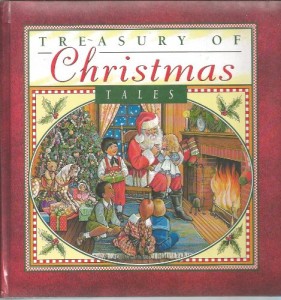
Treasury of Christmas Tales, by Carolyn Quattrocki
Summary
Treasury of Christmas Tales is a children’s book published around 1994 and consisting of a collection of classic Christmas stories. The book was put together by author Carolyn Quattrocki, and includes colorful illustrations by Susan Spellman and adaptions of works by writers such as Charles Dickens (“A Christmas Carol”), Clement C. Moore (“‘Twas The Night Before Christmas”), the Brothers Grimm (“The Elves and the Shoemaker”) and Hans Christian Andersen (“The Little Match Girl”). Written in simple text, Treasury of Christmas Tales contains 19 stories, all themed around Christmas and the winter holiday season:
- A Christmas Carol
- The Wishing Star
- The Little Match Girl
- The Christmas Mouse
- Jingle Bells
- The Magic Toy Shop
- The Littlest Angel
- The Twelve Days of Christmas
- The Christmas Bear
- ‘Twas the Night Before Christmas
- The Nutcracker
- Santa Claus is Coming to Town
- The Tiny Elf
- O Christmas Tree
- The Elves and the Shoemaker
- The Little Drummer Boy
- Christmas Carols
- The Happy Snowman
- Rudolph’s Adventure
Review
I remember I enjoyed reading this book with my mother and sisters when I was a child. Around the end of the year, my mom would read some of these tales to us while we followed along with the pictures, which really made for a fun family experience.
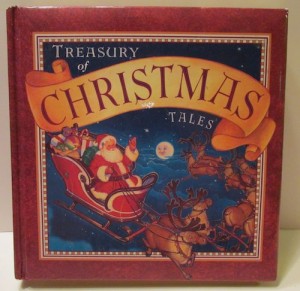
The 1994 edition of Treasury of Christmas Tales from my childhood
What I especially enjoyed about this book was how accessible the text was for us at our young age. Originally complex tales like “A Christmas Carol” were adapted into language that we as children could easily understand, but that didn’t lose the Christmas spirit of the story. Even sad tales like “The Little Match Girl” were told in a way that was uplifting and heartwarming. I also liked the colorful illustrations on every other page of the book, which made the stories even more comprehensible and memorable. It isn’t a broad collection for sure, but it does have good stories and illustrations that made it a joy for us to read every holiday season.
Inspiration
Though I hadn’t read this book since I was a kid, recently rediscovering it among my childhood belongings brought back pleasant memories of enjoying the holiday season with my family. It’s always fun to revisit stories from a happy time in your life, and the tales I enjoyed as a kid usually have a way of inspiring me to create stories of my own as an adult. So if you have some good holiday stories from your childhood, I encourage you to read them again this season. You may find just what you need to write your own cheerful Christmas tale!
by Naomi L. | December 10, 2014 | Blog, Creative Writing, Motivational Music |
I know it’s been a while since I last shared a Motivational Music post, so here’s a new one for you to enjoy! After debuting this segment with a similar post, today’s topic features more music in one of my favorite genres: post-rock. This style of music, aside from being pleasant to listen to, tends to inspire quite a bit of my writing, so I hope you’ll find it motivational too! Enjoy!
Moving Mountains
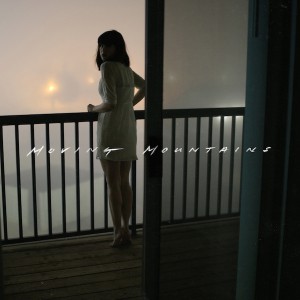
Moving Mountains (2013)
Genre(s): Post-rock, Indie rock
Origin: Purchase, NY, USA
Writing Inspiration: Drama, poetry, romance
My Favorite Song(s): “Hands“, “Swing Set“, “Once Rendering“
Moving Mountains were an indie rock band from New York, active from 2005 to 2013. They’re well known for their versatile style of music, which generally combines emotional vocals with post-rock instrumentals. Because of this, I usually listen to them when I want to find inspiration for poetic and dramatic themes. Their last album, Moving Mountains, has been especially motivational for my romantic stories due to its ambient qualities, while older albums like their rock-oriented Waves provide inspiration for my darker poetry ideas. Moving Mountains have covered a relatively broad range in the indie rock spectrum, so if you enjoy this style of music, chances are they have at least a few songs that may inspire you.
Gates
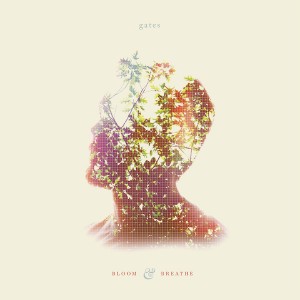
Bloom & Breathe (2014)
Genre(s): Post-rock, Ambient, Indie rock
Origin: New Brunswick, NJ, USA
Writing Inspiration: Drama, tragedy, poetry
My Favorite Song(s): “Bloom“, “Not My Blood“, “Born Dead“, “They See Only Shadows“
Having emerged from New Jersey in 2011, Gates are a relatively new band on the post-rock scene. “Similar Artists” lists on popular music streaming sources tend to rank them very close to Moving Mountains, but they’re no mere copy for sure. While Moving Mountains most recently showed a softer quality to their music, Gates consistently implement more elements of rock in their songs, as is well evidenced in their newest album, Bloom & Breathe. With solid instrumentals and lyrics layered with emotional influences, Gates have been great inspiration for some of my more dramatic and tragic stories, as well as the occasional poem. Even when I’m not seeking creative inspiration, I enjoy getting lost in this music while taking a break from writing. Whether you’re trying to get inspired to create a dramatic piece of art or simply in the mood to sink back into some awesome music for a while, I highly recommend giving Gates a listen! You won’t regret it.
There Will Be Fireworks
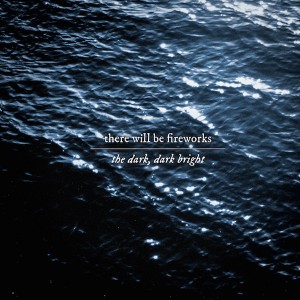
The Dark, Dark Bright (2013)
Genre(s): Post-rock, Indie rock
Origin: Glasgow, Scotland
Writing Inspiration: Poetry, romance, drama
My Favorite Song(s): “South Street“, “River“, “Here Is Where“, “Says Aye“
There Will Be Fireworks were among the first bands I listened to after my best friend introduced me to post-rock. Much like the previous two bands, their music consists largely of emotional lyrics set to atmospheric instrumentals, which make for some hauntingly beautiful songs. Their newest album in particular, The Dark, Dark Bright, is a powerfully moving collection that has inspired me to write romantic poetry and stories. The vocals are by no means perfect, but I feel that just adds even more to the raw genuineness of the music, especially with such touching lyrics to go with it (I haven’t yet been able to listen through without at least getting choked up). TWBF are one of those bands I could listen to for hours, and if you appreciate genuine music that flows with every note and has the potential to touch your creative soul, I’m sure you’ll feel the same way!
I hope you’ve enjoyed reading about these amazing post-rock bands, and that they’ll inspire your writing as much as they’ve inspired mine! Thanks for reading/listening!
Reminder: if you really enjoy the music by the bands featured in this article, be sure to support them through their official music pages (links in the above album covers)! Help keep the indie scene thriving! Thank you!
by Naomi L. | June 4, 2014 | Blog, Creative Writing, Motivational Music |
If you read my post about VOCALOID last week, you probably saw this coming. If you didn’t, I strongly recommend you take a quick look at that one in order to understand what I’m about to show you now. All caught up? Great, then let’s get started!
This may seem rather bizarre since my last Motivational Music post featured classical music, but I guess that just goes to show how diverse my musical taste really is, and more importantly, how many different styles can inspire my writing (and hopefully yours). Ready for a taste of music from Japan? Then allow me to dig just a little deeper into the aforementioned love of mine by sharing music that features the voices of my three favorite Vocaloids: Hatsune Miku, Megurine Luka and KAITO.
Hatsune Miku
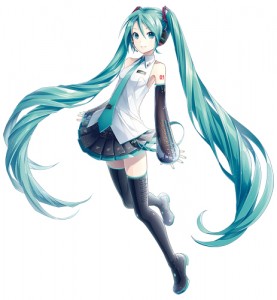
Hatsune Miku (V3)
Genre(s): Pop, Rock, Electronic
Origin: Tokyo, Japan (Fujita Saki, Miku’s voice provider)
Writing Inspiration: Humor, Drama, Romance
My Favorite Song(s): “World is Mine“, “Magnet” (duet with Megurine Luka), “Romeo and Cinderella“, “Rolling Girl“, “Tell Your World“, “Senbonzakura”
My Favorite Producer(s): ryo (Supercell), Hachi, kz (livetune), wowaka, Mitchie M
Popularly known as “everyone’s favorite digital diva”, Hatsune Miku has been a national celebrity in Japan for years and more recently seems to be making quite an impact in the Western world. She was designed to represent the future of music (reflected in her name, as “hatsu-ne-miku” means “first sound of the future”), and by now has likely been used to sing in every genre of music imaginable (and I mean every genre, from opera and Broadway to heavy metal and dubstep). I often think of Miku as the Jack-of-all-trades of the Vocaloids; she has a voice suited to all types of music, but she isn’t always the best choice of vocals for a given song (case in point, virtually every other popular Vocaloid has a cover song that’s arguably better than its corresponding Miku original: “A Single Red Leaf” as sung by Luka, “Electric Angel” as sung by Rin and Len, “Poetaster and Singing Dolls” as sung by Gakupo, “My True Self” as sung by Kaito and Meiko, etc.). That being said, the songs that are well-suited for her are awesome.
Because most of her popular songs are upbeat, I’ve found Miku to be great inspiration for cheerful themes and stories with happy endings. At the same time, she sings a variety of songs that make good inspiration for other types of writing, including romantic, melancholy, terrifying, and just plain bizarre. Even if all you need is motivation to create, Miku is very good at cheering her listeners on and making them feel special. The subject matter of her songs covers everything from the meaning of life to vegetable juice, so whatever you plan to write, chances are there’s a Hatsune Miku song out there that may inspire you!
For some awesome music featuring Miku’s vocals, I recommend looking up songs produced by ryo, Hachi, livetune, wowaka and Mitchie M. Of course, great Hatsune Miku songs are never in short supply, as evidenced by the fact that she dominates Nico Nico Douga’s Hall of Legend. What can I say? She’s clearly everyone’s favorite digital diva for a reason!
Megurine Luka

Megurine Luka
Genre(s): Ballad, Pop, Dance
Origin: Tokyo, Japan (Asakawa Yuu, Luka’s voice provider)
Writing Inspiration: Drama, Tragedy, Romance
My Favorite Song(s): “Witch Hunt“, “Toeto“, “Double Lariat“, “Circus Monster“, “Happy Synthesizer” (duet with GUMI)
My Favorite Producer(s): fatmanP, Yuyoyuppe, Suzuki-P, Circus-P
My other favorite female Vocaloid, Megurine Luka‘s most notable quality is her ability to sing in both Japanese and English (hence the name “meguri-ne”, which translates as “round sound”). Unlike Miku, Luka is best known within the VOCALOID fandom as a ballad singer for her low mature-sounding voice, and most producers famous for using her have her sing slow, sad songs. That isn’t to say she only excels in this genre, though; in fact, some of her biggest hits are the type of songs that make you want to get up and dance (would you believe me if I told you I know the whole choreography to this song?). Her soft soothing vocals also make her an excellent choice for songs with romantic themes, so she’s definitely a potential favorite of fans who enjoy those types of stories!
Luka has been great inspiration for some of my more dramatic writing, such as romance and tragedy. Some of her best ballads are written by fatmanP and Yuyoyuppe, while Circus-P is famous for writing original songs for her in English. Luka is a popular choice among various producers, though, so your best bet to find great music featuring her voice is to check out her music page on the VOCALOID wiki. She may not be as famous as Miku, but you’ll find that she too has a wide variety of great songs to enjoy!
KAITO
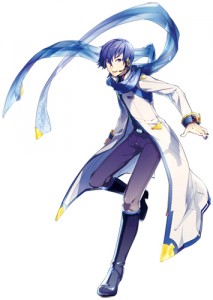
KAITO V3
Genre(s): Folk, Electronic, Rock
Origin: Japan (Fuuga Naoto, Kaito’s voice provider)
Writing Inspiration: Romance, Humor, Poetry
My Favorite Song(s): “A Thousand-Year Solo“, “Tsugai Kogarashi” (duet with MEIKO), “Cantarella“, “What’s COLOR?“, “Crescent Moon”
My Favorite Producer(s): Shigotoshite-P, Shinjou-P, natsuP, Kurousa-P
Kaito (also known by his fan-given name Shion Kaito) is my favorite male Vocaloid. In a franchise that consists mostly of female voices, it’s refreshing to enjoy a lower register of vocals once in a while (plus a cute face to match, *wink*). Being one of only two Japanese voicebanks for the original VOCALOID engine (the other being Meiko), he is actually older than Miku and Luka (who were both released for VOCALOID2), but took considerably longer to become as popular. Due to his standing as a veteran Vocaloid, Kaito has a tendency to sound more “electronic” than his successors, but the best producers who use his voice know how to play this to their advantage. Because of this, many of Kaito’s best songs don’t try to hide the fact that he isn’t real, but instead use him to create a unique sound or theme that a human singer couldn’t pull off.
Most of the songs featuring Kaito at his best come in the form of traditional folk music or electronic tracks that showcase his original sound, though he’s also frequently used to sing rock (usually in the visual kei band VanaN’Ice with Kamui Gakupo and Kagamine Len). He’s also very good at singing duets with other Vocaloids; one of the biggest shipping wars I’ve ever come across in the fandom is about whether he makes a better couple with Miku (as in “Cendrillon“) or with Meiko (as in “A Pair of Wintry Winds“), and his cover of “Magnet” with Gakupo proves he has excellent chemistry with female and male Vocaloids alike. Since his V3 update, Kaito has become even more versatile, adding softer tones to his voice and even gaining the ability to sing in English, so good music sung by him isn’t likely to run out anytime soon!
Because of his range as a singer and a character, I find Kaito to be great inspiration for various types of writing, especially romance, humor and poetry. Most of my favorite songs featuring his voice were written by Shigotoshite-P (Japanese folk music), Shinjou-P (electronic) or natsuP (rock), so if you’re looking for some great Kaito songs, I highly recommend starting with music by any of these talented ladies. They really know how to make him shine!
Bonus: Want to hear a song performed by all three of these amazing Vocaloids? Try “ACUTE“; yes, it’s a tragic story about a love triangle, but the music is great!
I hope you’ve enjoyed learning about my three favorite Vocaloids, and that you have fun listening to the music I’ve shared with you! Thanks for reading/listening!
VOCALOID is a product of Yamaha. Hatsune Miku, Megurine Luka and KAITO belong to Crypton Future Media. All official artwork is displayed for illustrative purposes only. I own nothing!
by Naomi L. | January 22, 2014 | Blog, Creative Writing, Off The Bookshelf |
I wanted to start this year’s Off The Bookshelf posts with a review of a beautiful story that I finally got around to reading recently. I know I really should have read it (or rather, finished reading it) a long time ago, and after I did, I realized what I had been missing since I was a kid. So long overdue, here is a review of a classic tale by a French aviator and author: The Little Prince, by Antoine de Saint-Exupéry.
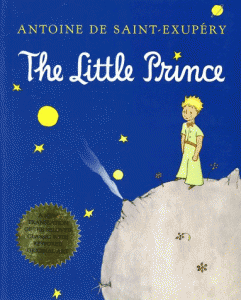
The Little Prince, by Antoine de Saint-Exupéry
Summary
The Little Prince (or Le Petit Prince, in its original French title) was first published in 1943 by Reynal & Hitchcock, in both English and French. Narrated in the first person, the book tells the story of a pilot who ends up stranded in the desert, where he meets a strange boy from a distant and tiny “planet” (which is really an asteroid). Over the eight days it takes him to fix his plane, the narrator gets to know the story of this “Little Prince”, from the life he had on his planet to the journey that brought him to Earth. The Little Prince enchants the pilot with his eccentric and poetic outlook on the world, and when the time comes for both of them to return home, the narrator is utterly heartbroken to lose the only friend he’s ever known who could appreciate life with the beautiful innocence of a child.
Review
What stands out most about this book is how it criticizes the “adult” way of thinking. The story begins with the narrator telling his readers how he was discouraged from pursuing art by grown-ups who couldn’t comprehend his drawings when he was younger. Since that time, the Little Prince was the first person he ever met who understood the vision he had as a child. Still very young himself, the Prince thus represents the simple way children see the world in contrast to the analytical views of adults, and does so in a way that makes the former much more appealing.
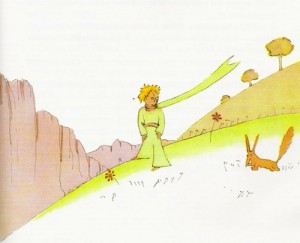
The Little Prince and the Fox
(Illustration by Antoine de Saint-Exupéry)
Though appearing to be a children’s book, The Little Prince is arguably targeted at adults who have forgotten how to understand the world the way they should. We as mature readers have it constantly pointed out to us that our manners are flawed, that we are too concerned with “matters of consequence”. Basically, we’ve become so focused on trivial details that we’ve lost sight of the things that are truly important. Perhaps this idea is most evident in a scene involving another well-spoken character of the story: a fox that the prince meets on his journey through Earth.
One sees clearly only with the heart. What is essential is invisible to the eye.
– The Fox, The Little Prince (Antoine de Saint-Exupéry, 1943)
The Little Prince is a charming tale fit for readers of all ages. For adults, it’s a reminder of the lessons that can be learned from youth, many of which may have been lost long ago. As for children, they can find embedded in these pages the encouragement to keep living their own special way, and, if nothing else, a friend who can teach them the real matters of so much importance.
Inspiration
If there’s one thing I loved most about this book, it was the way it constantly reminded me how I used to see the world when I was a little girl (and how I probably should see it again as a woman). Living in a world that seems to demand we grow up as quickly as possible, it’s easy to forget what it’s like to experience life through the innocent eyes of children. The Little Prince’s questions and observations, coupled with the grown-ups’ awkward answers, served as a lesson on how I should never lose touch with the curious child still in my heart, for to do so would be like losing a very special friend.
Overall, I enjoyed this book very much. Though it did break my heart a little, it was wonderful to read a story that could effortlessly shine light on the poetry children can bring to the world. The Little Prince has a lovely perspective on life, and after reading his story, I only hope I can remember to keep setting my inner child free. She is, after all, a very important friend to the grown-up writer I’ve become.
by Naomi L. | December 18, 2013 | Blog, Creative Writing, Off The Bookshelf |
It’s the holiday season, and that means it’s the perfect time to share a blog post about a Christmas-themed story! I had originally planned this post for next week (Christmas Day), but when I realized Christmas is also the last Wednesday of the year, I decided to bump this review up and save next week for a special post instead. So here it is a week early, a review of another of my favorite Dr. Seuss books: How The Grinch Stole Christmas!
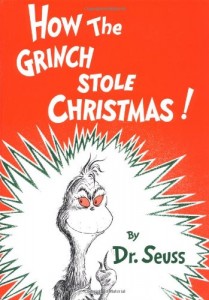
How The Grinch Stole Christmas!, by Dr. Seuss
Summary
Every Who down in Whoville liked Christmas a lot,
But the Grinch, who lived just north of Whoville, did NOT!
– How The Grinch Stole Christmas! (Dr. Seuss, 1957)
Originally published by Random House in 1957, How The Grinch Stole Christmas! tells the story of a grouchy creature known as the Grinch and his plot to ruin Christmas for the town of Whoville, located just south of his cave on Mount Crumpet. Annoyed every year by the festivities of the warm-hearted Whos, he dons a makeshift Santa Claus costume and descends into Whoville on Christmas Eve to steal all their presents, food and decorations, in the hope of stopping the holiday from ever arriving. Come Christmas morning, however, he is surprised to find that despite his best efforts to discourage them, the Whos still have the spirit of Christmas in them, and that day, the Grinch learns a valuable lesson about the true meaning of the holiday season.
Review
I’ve always appreciated How The Grinch Stole Christmas! for its uplifting message about the holiday spirit. With all the commercialization that Christmas has undergone over time, it’s easy to lose sight of the simpler things we should enjoy during the holidays, such as the company of our loved ones and all the possibilities that come with a new year. Puzzled to hear the Whos singing on Christmas morning, the Grinch starts to wonder why his plan didn’t work, and comes to a heartwarming revelation.
Maybe Christmas, he thought, doesn’t come from a store.
Maybe Christmas, perhaps, means a little bit more.
It probably goes without saying that the author’s intention with this story was to criticize the commercialization of Christmas. Interestingly, the Grinch has been compared to Seuss himself, who claimed to have found inspiration for the character after seeing a “Grinchy” face in the mirror on December 26th. His idea was to write this sour character in order to rediscover the meaning of Christmas, which he felt had been lost on him at some point in the past. The same way he did with Horton Hears a Who!, Dr. Seuss drew from his own life experience to tell a heartwarming story that readers of all ages can enjoy for its important lesson.
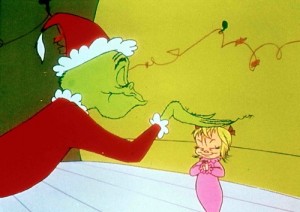
The Grinch and Cindy Lou Who, How The Grinch Stole Christmas! (1966)
Like most of Dr. Seuss’s children’s books, How The Grinch Stole Christmas! is written in rhyming verse and illustrated with colorful and bizarre characters, making it a fun and memorable read for the whole family. A noteworthy adaptation of the book is the 1966 TV special directed by Chuck Jones (of Looney Tunes fame). I remember watching it often as a kid and smiling every time the Grinch’s heart grew three sizes at the end of the story (not to mention Cindy Lou Who was probably the sweetest little thing I’d ever seen in a classic cartoon). It’s an adaptation I’d highly recommend, so if you haven’t seen it yet and it runs annually on TV in your region, be sure to watch it this holiday season! And while you’re at it, you may want to read the book again; it’s truly a Christmas classic!
Inspiration
What I find most inspiring about this book is the way it never fails to fill me with holiday cheer, regardless of the time of year. I enjoy a good story where the villain is the main character, and seeing the Grinch embrace the Christmas spirit helps me remember that there’s more to the holidays than presents (not that I ever needed much reminding, with a wonderful family like mine).
Overall, How The Grinch Stole Christmas! is a very enjoyable read, and one that should definitely be on every Seuss fan’s bookshelf. Whether I’m in the mood for his fun stories and illustrations or for his good life lessons, I always find something wonderful to enjoy in Dr. Seuss’s charming holiday tale! Enjoy, and have a very Merry Christmas!















Recent Comments